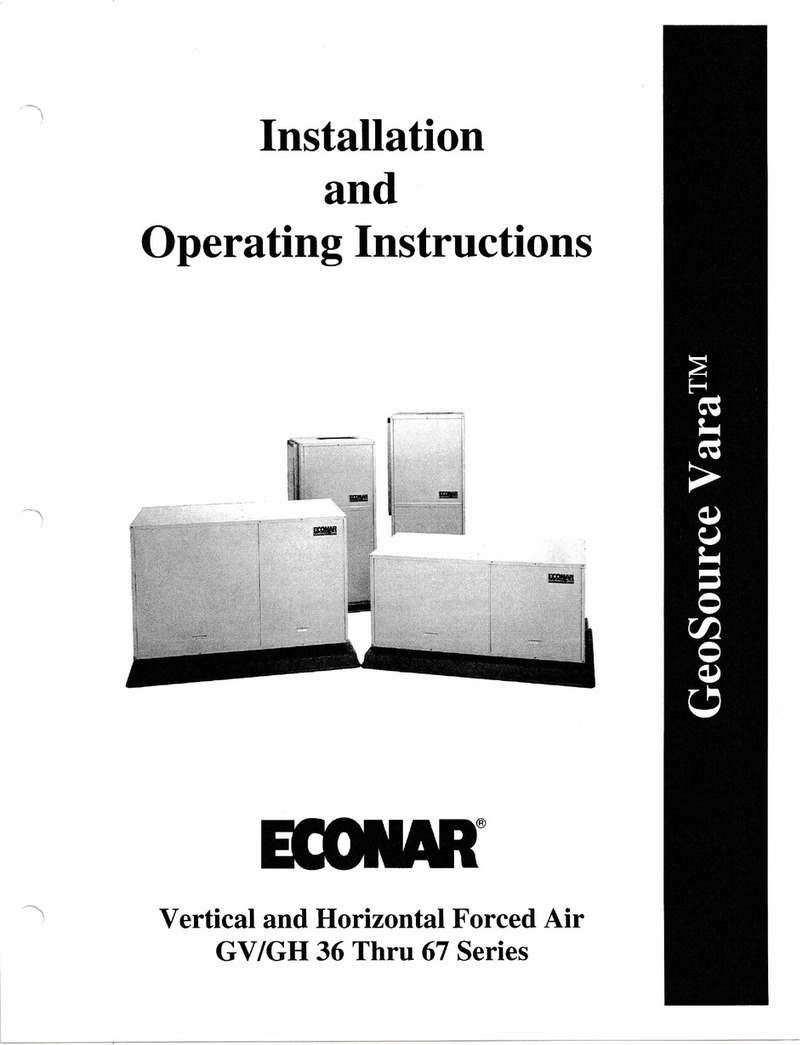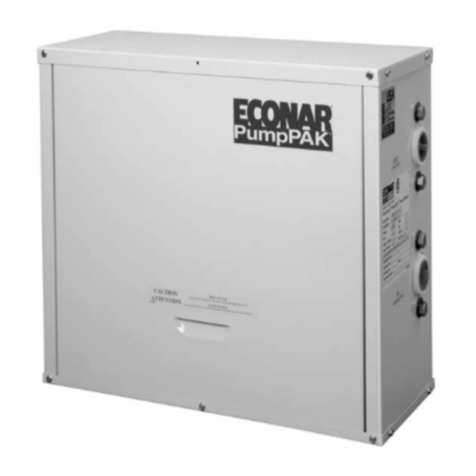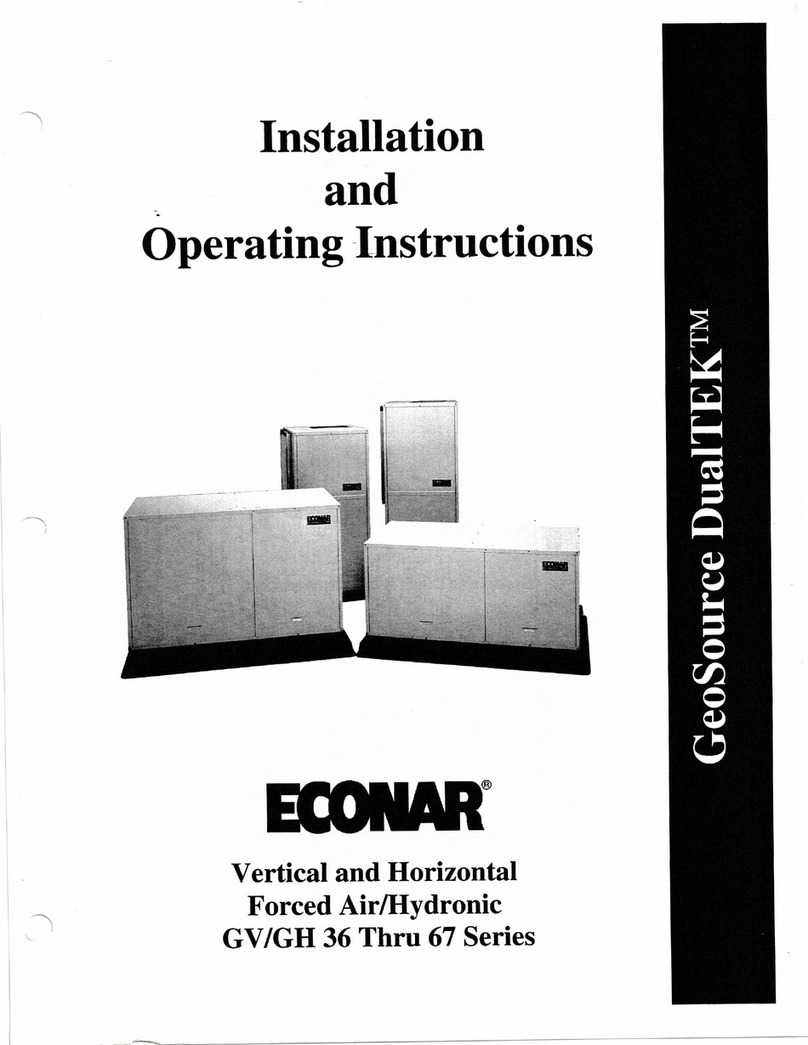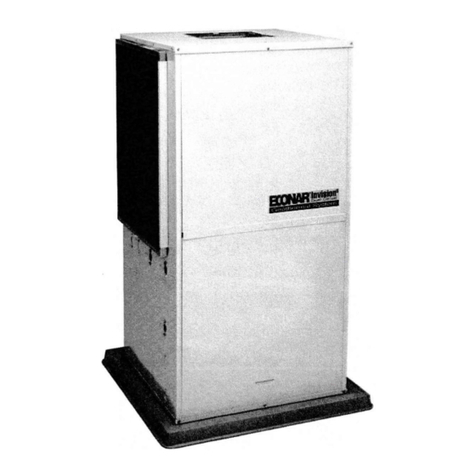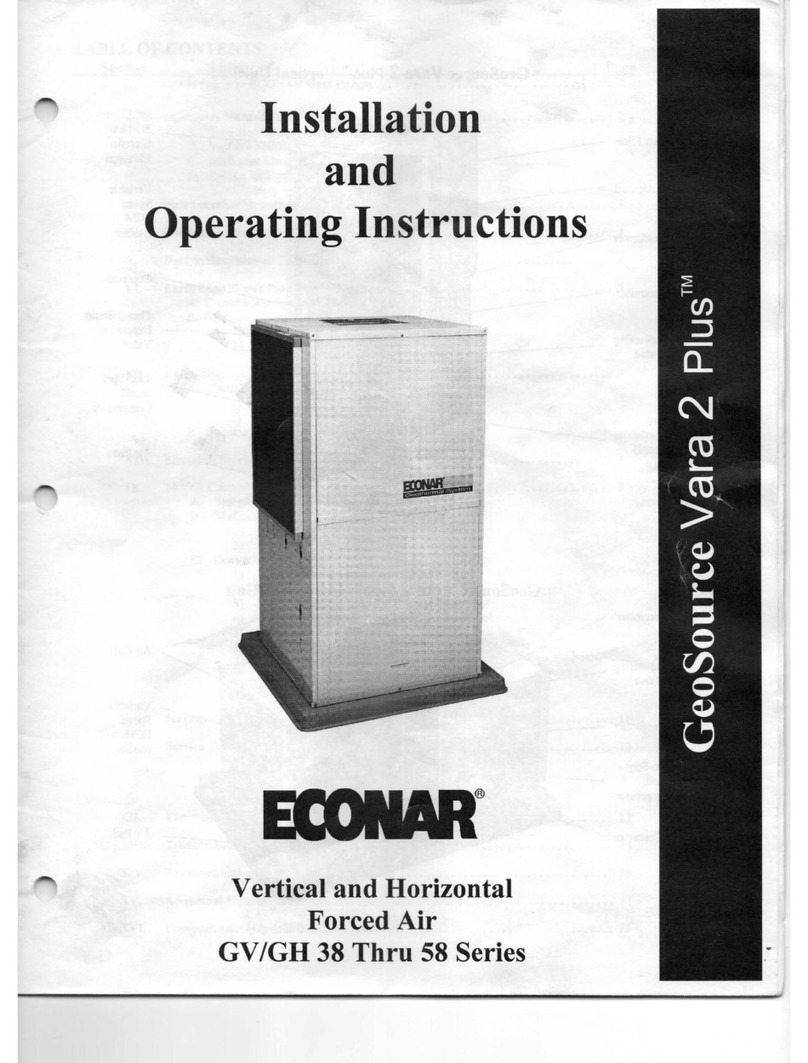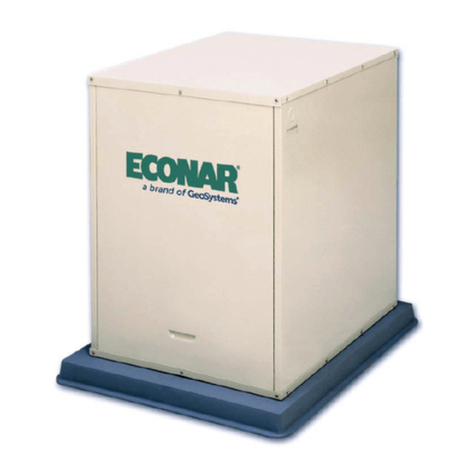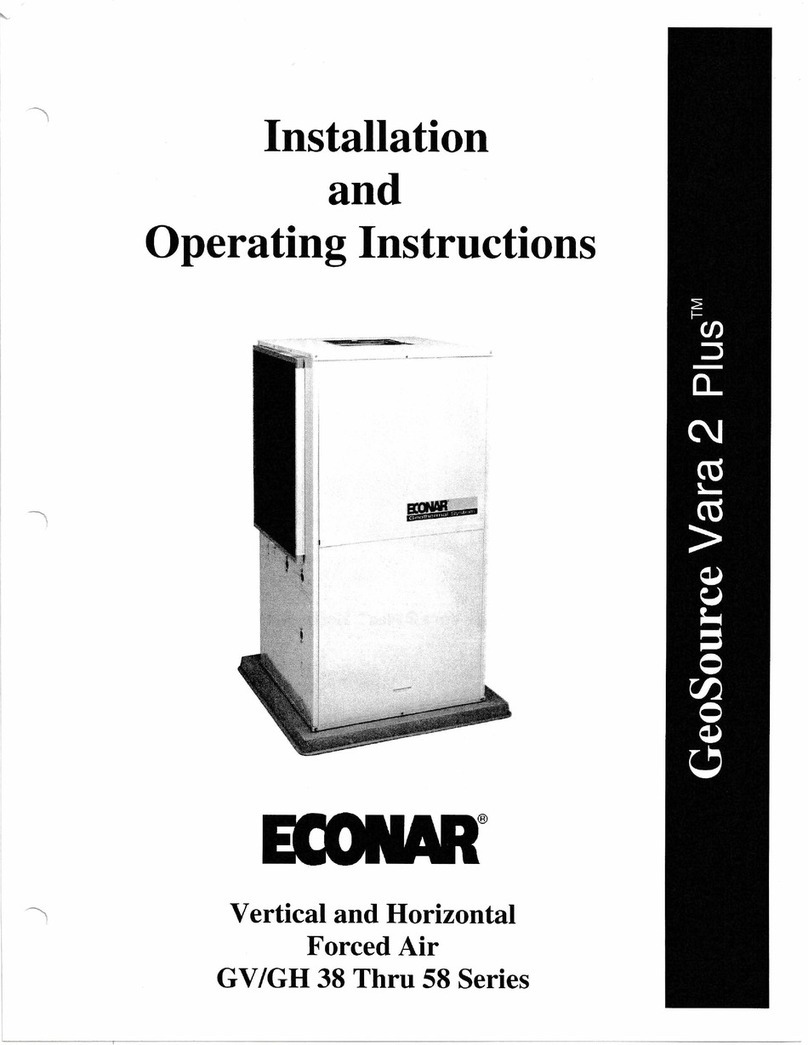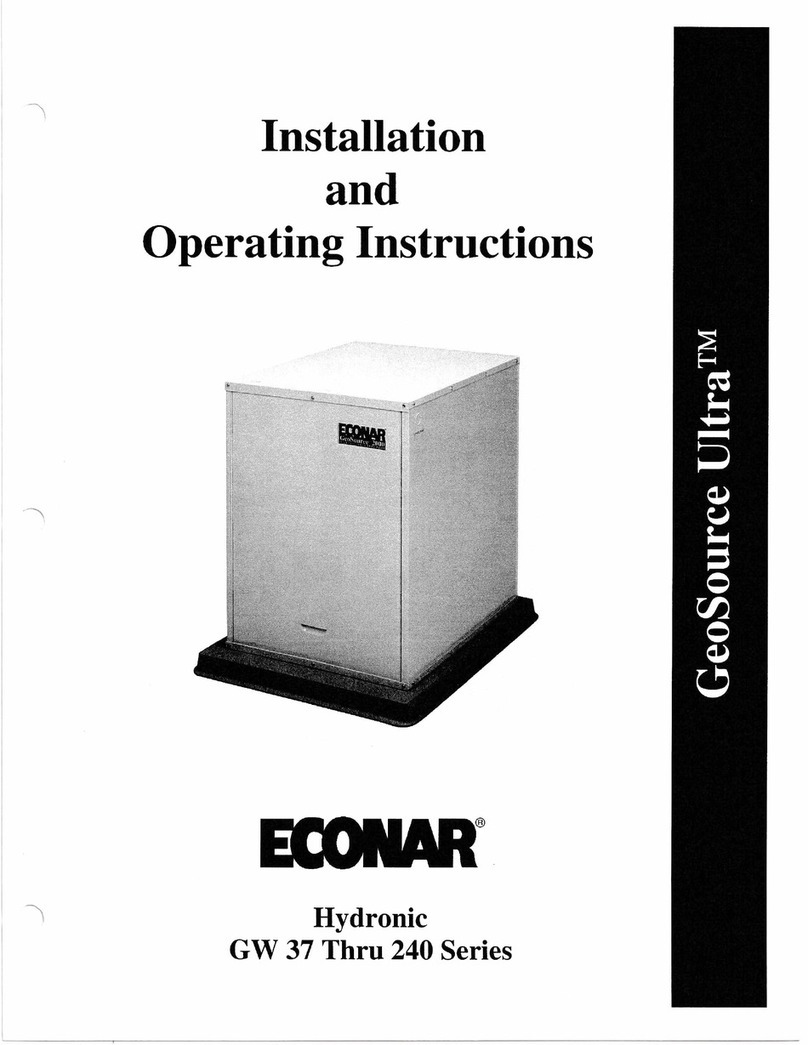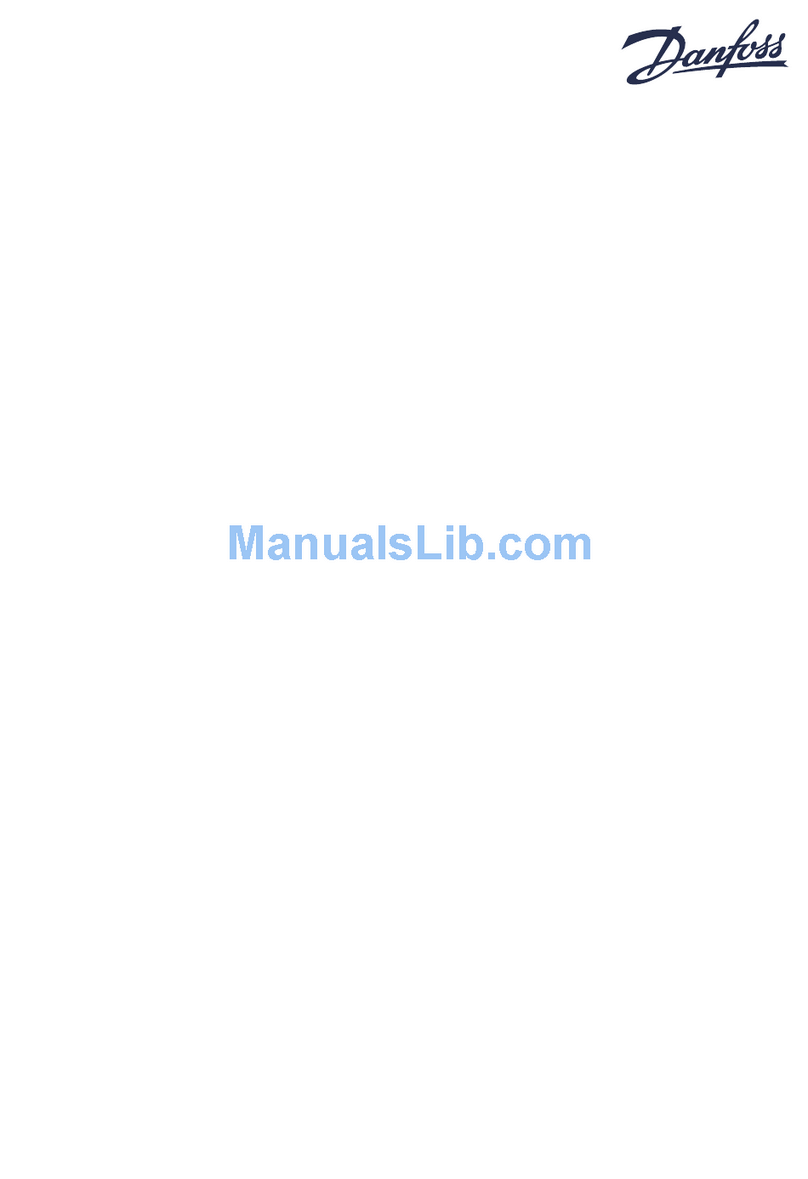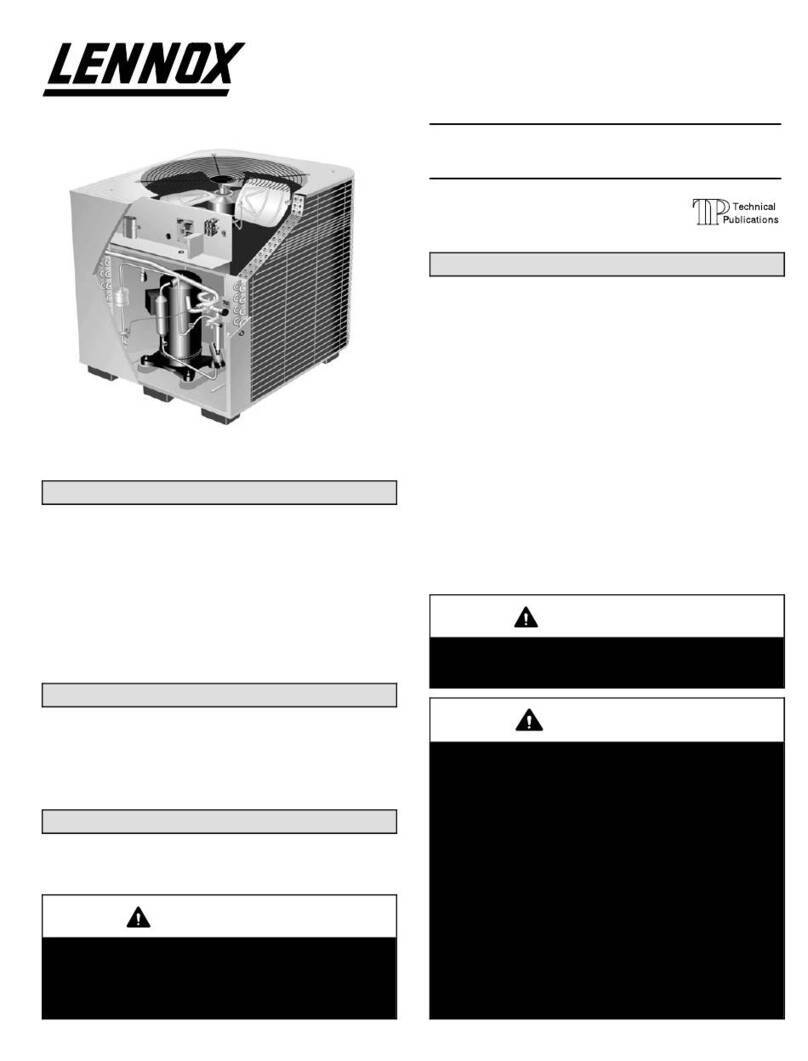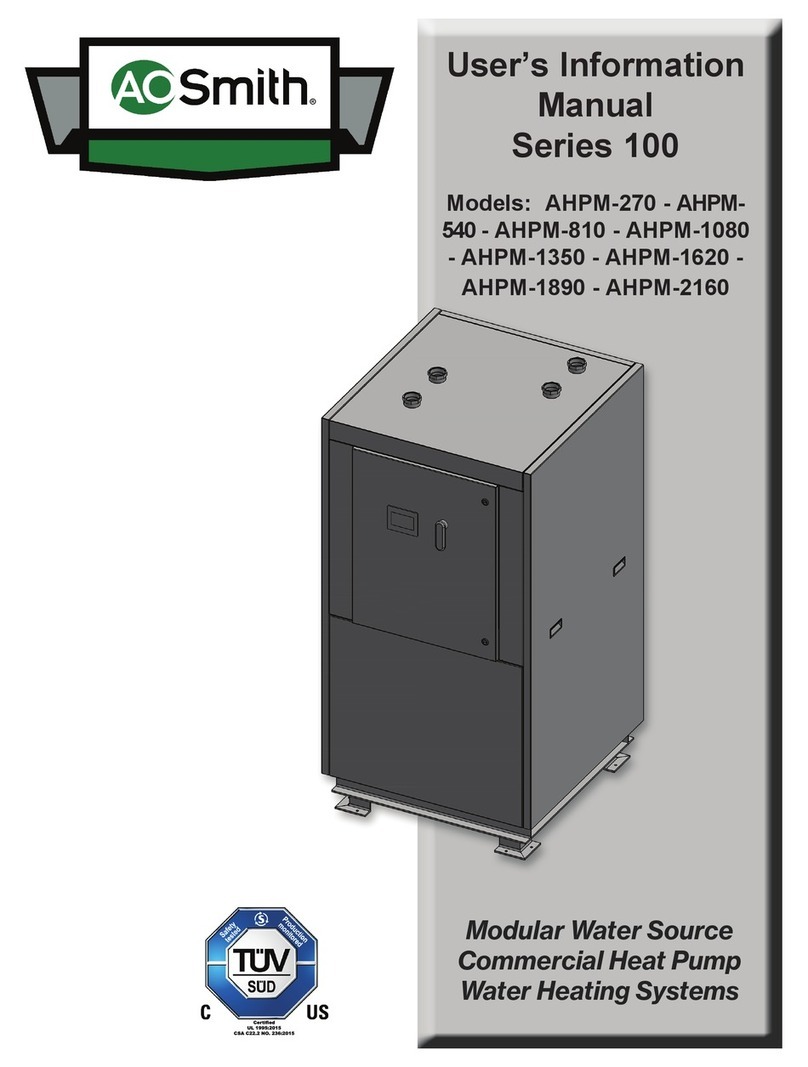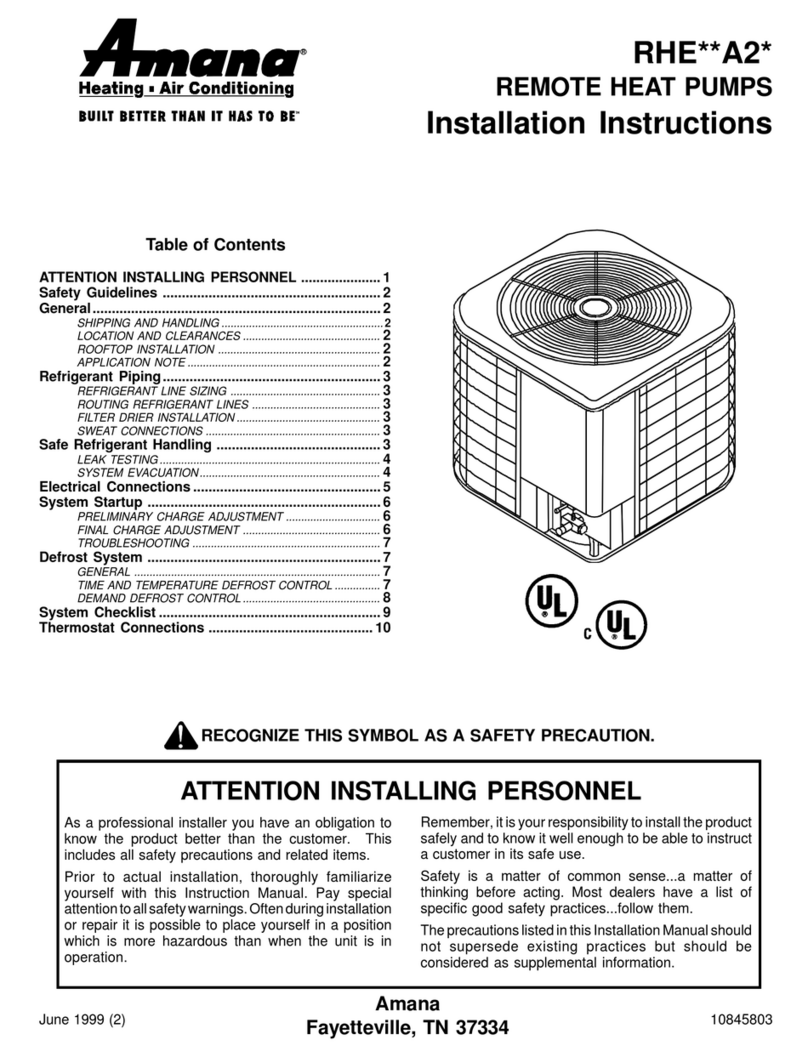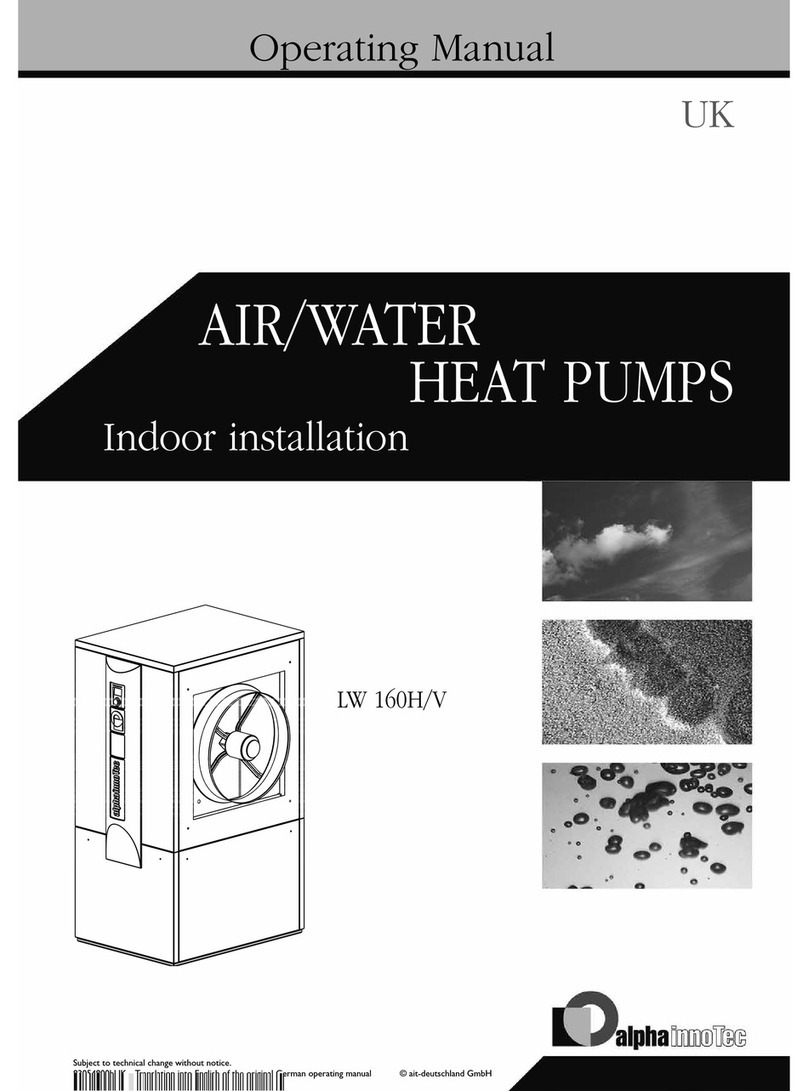
7
1. Turn off the heat pump and its water supply.
2. Open a plumbing connection on the water supply
side, if possible, to break the system vacuum and
allow easier drainage of the system and water coil.
3. Drain the water out of the system and water coil
via the boiler drains on the entering and leaving
water lines, and the drain on the heat exchanger.
NN WARNING!! NFAILURE TO COMPLETELY
DRAIN THE WATER COIL HEAT EXCHANGER
COULD POSSIBLY RESULT IN A FREEZE
RUPTURE!
4. Set the thermostat to "Heat" to start the heat pump
in the heating mode and quickly freeze the coil.
5. Allow the heat pump to run until it automatically
shuts off on low pressure and then turn the
thermostat to the "Off" position.
6. Recap the water coil drain and tighten any
plumbing connections that may have been
loosened.
7. If so equipped, open the field installed drain cock
on the water discharge side of the heat pump, and
install a short piece of rubber hose to allow
drainage into a drain or bucket. A drain cock on
the discharge side allows the water flow to bypass
the solenoid valve, flow valve, flow meter, or any
other item that may be clogged by mineral debris.
Drainage to a bucket helps prevent the clogging of
drains and allows you to visually determine the
effectiveness of the procedure.
8. Turn on the water supply to the heat pump in order
to start the process of flushing any mineral debris
from the unit.
9. Set the thermostat to "Cool" and start the heat
pump in the cooling mode to quickly thaw out the
water coil.
10. Run the heat pump until the water coil is
completely thawed out and any loosened scale,
mineral deposits, or other debris buildup is flushed
completely from the water coil. Allow at least 5
minutes of operation to ensure that the water coil
is thoroughly thawed out.
11. If the water still contains mineral debris, and if the
flow through the unit did not improve along with
an increase in the temperature difference between
the water supply and discharge, repeat the entire
procedure listed above.
12. Reset the heat pump for normal operation.
b. Chlorine Cleaning (Bacterial Growth)
1. Turn the thermostat to the "Off" position.
2. Connect a submersible circulating pump to the
hose bibs on the entering and leaving water sides
of the heat exchanger.
3. Submerse the pump in a five-gallon pail of water
and chlorine bleach mixture. The chlorine should
be strong enough to kill the bacteria. Suggested
initial mixture is 1 part chlorine bleach to 4 parts
water.
4. Close the shut off valves upstream and
downstream of the heat exchanger.
5. Open the hose bibs to allow circulation of the
bleach solution.
6. Start the pump and circulate the solution through
the heat exchanger for 15 minutes to one hour.
The solution should change color to indicate the
chlorine is killing the bacteria and removing it
from the heat exchanger.
7. Flush the used solution down a drain by addinga
fresh water supply to the pail. Flush until the
leaving water is clear.
8. Repeat this procedure until the solution runs clear
through the chlorine circulation process.
9. Flush the entire heat pump system with water.
This procedure can be repeated annually,semiannually, or
as often as it takes to keep bacteria out of the heat
exchanger, or when bacteria appears in a visual flowmeter
to the point the flow cannot be read.
Another alternative to bacteria problems is to shock your
entire well. Shocking your well may give longer term
relief from bacteria problems than cleaning your heat
exchanger, but will probably need to be repeated, possibly
every three to five years. (( Contact a well driller in your
area for more information.
c. Miratic Acid Cleaning (Difficult Scaling
and Particle Buildup Problems)
1. Consult installer due to dangerous nature of acids.
2. Iron out solutions and de-scaling products are also
useful.
V. CONDENSATE DRAIN
Condensate traps are built into everyGeoSource 2000
vertical unit, so an external trap should not be installed.
Vertical units must be level to insure proper condensate
drainage. Horizontal units require an external condensate
trap in order to drain water from the heat pump.
Horizontal units must also be mounted level in order for
the condensate to drain.
The condensate line as it leaves the U bend of the
condensate trap must be at least 3” below the base of the
heat pump. This requires the U bend to be 6” below the
unit to give the upward portion of the U bend a 3” lift.
The condensate trap should be vented after the U bend.
The condensate line should be pitched away from the unit
a minimum of 1/8” per foot. If the unit produces an odor
in the cooling mode, the condensate trap or line may be
plugged, or the unit maynot be pitched correctly. Bleach
may be poured down the condensate drain in the heat
pump to kill any bacterial growth in the condensate line.
Downflow units also require an external condensate trap.
A stand is required underneath a downflow unit, since
placing the unit on the floor would not allow for the 6”




















